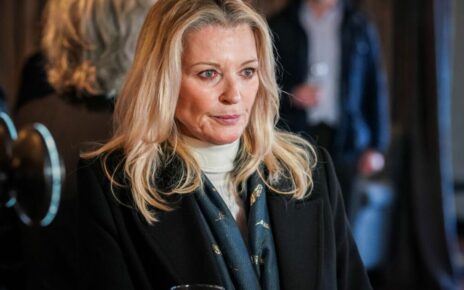Although writer-director Andrew Dominik’s “Blonde” is filled with moments that meticulously recreate iconic images of Marilyn Monroe — from magazine shoots and paparazzi photographs to classic scenes from “Some Like it Hot” and “Gentlemen Prefer Blondes” — cinematographer Chayse Irvin never felt freer to experiment and explore.
“We created the film with the sentiment of chaos,” he told IndieWire. “As filmmakers, we come up with concepts and ideas of how to structure everything, but a lot of the art is actually in how it’s produced, how it’s executed. And if you have a method to that, it reflects the images more vividly than creating the images as symbols for a particular meaning. It becomes more interpretive and you just harness the energy rather than tell the spectator how to feel or think about something.”
Irvin took his initial cues from two massive documents: a 700-plus page collection of images from Monroe’s life that Dominik had accumulated during a decade of research, and the Joyce Carol Oates novel on which the film is based. The photographs were placed in a sequence that reflected the story, which Irvin said “felt like you were caught in a torrent of images depicting her life.”
The Oates novel provided the psychology behind the images. “I read the novel three times and had an interpretation that it was a depiction of her entire life, but it was as if it was her reliving her life at the moment of death.” The dreamlike nature of Oates’ narrative motivated the fluid approach Irvin would take to his imagery. “It was like a hallucination happening in a sequence,” Irvin said. “So we were pushing things to the point of hyperbole because her feelings were the guide through this particular story. It was less about recreating factual events and more about ‘How do we distort it in a way that really harnesses how she must have felt in that moment?’”


“Blonde”
Netflix
That said, one of the most striking aspects of “Blonde” is the way it replicates images we’re all familiar with to create an eerie sense of cinematic déjà vu, and the accuracy of the recreations intersects with the film’s more nightmarish expressionism to yield truly unique effects. Whenever he used actual photos or footage of Monroe as reference points — as in the scenes depicting her with her celebrity husbands — Irvin was rigorous about recreating the compositions.
“I was using the same focal lengths — I didn’t know exactly, but I was guessing what they could be — and we were shooting in a lot of the real locations where those images were taken. So I had the image in front of me printed onto a card, and I would look at it and then I would place the camera and try to create that same geometry within the frame.”
Irvin stressed, however, that all of the experimentation was at the service of the actors, particularly Ana de Armas, whose performance as Marilyn anchors the entire film. “The composition has to have harmony with what’s happening emotionally,” he said. “My primary function is to create a window for the spectator to travel into the story. I’m often using geometric shapes and lines and negative space and various rules, but the image in cinematography only radiates outward from the humanity of the moment that’s being expressed. If that’s denied in any way, then it fails to penetrate the spectator. When I think of scenes, I don’t think of them in terms of shots. I really abstain from that kind of thinking. I almost think of them entirely as events. And then once I get the core of that event clear, usually the ideas just come to me very naturally.”


“Blonde”
screenshot/Netflix
“Blonde” was an even more intuitive film than usual for Irvin given the instability at the center of the film and its lead character. “I wasn’t trying to apply a specific structure. I was actually doing the opposite. I was trying to make it feel structureless because Marilyn always had this need for stability and love in her life, but she could never find it. It was always being denied. I felt that if I created a structure, I would create that stability and I wanted to violate that.”
Irvin also allowed room for surprises in scenes that had to be more preconceived for logistical reasons, like movie premiere sequences that required hundreds of extras. “When they’re pulling up in the limousine and the camera tracks with the mob and cuts to a single of Marilyn looking out the window, that single was a gift,” Irvin said. “I had seen the reflection in the glass as we were rehearsing, so I asked my key grip to prepare a door mount. Even in those sequences that had more of an intention, a lot of the film was completely intuitive. We really wanted a humanness, and in my view, that human touch is less than perfect.”
“Blonde” is now streaming on Netflix.
Source: Read Full Article

